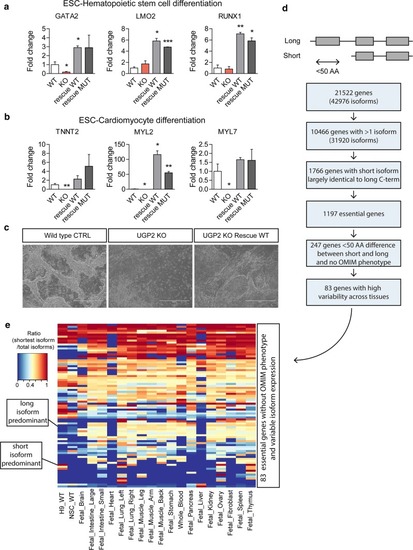Fig. 7
- ID
- ZDB-FIG-200310-11
- Publication
- Perenthaler et al., 2019 - Loss of UGP2 in brain leads to a severe epileptic encephalopathy, emphasizing that bi-allelic isoform-specific start-loss mutations of essential genes can cause genetic diseases
- Other Figures
- (all 7)
- All Figure Page
- Back to All Figure Page
|
Essentiality of UGP2 and other disease candidate genes with a similar mutation mechanism. |

